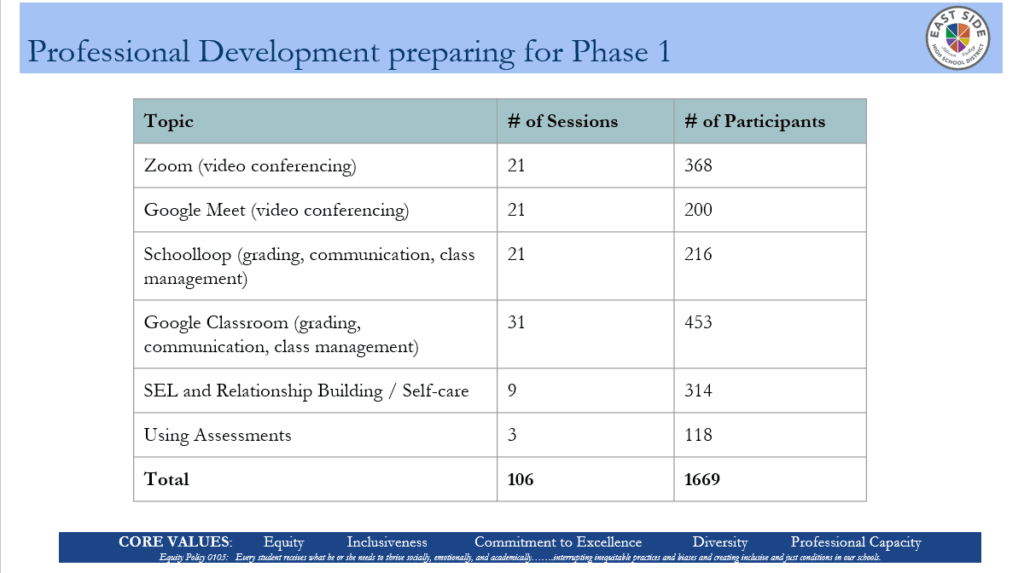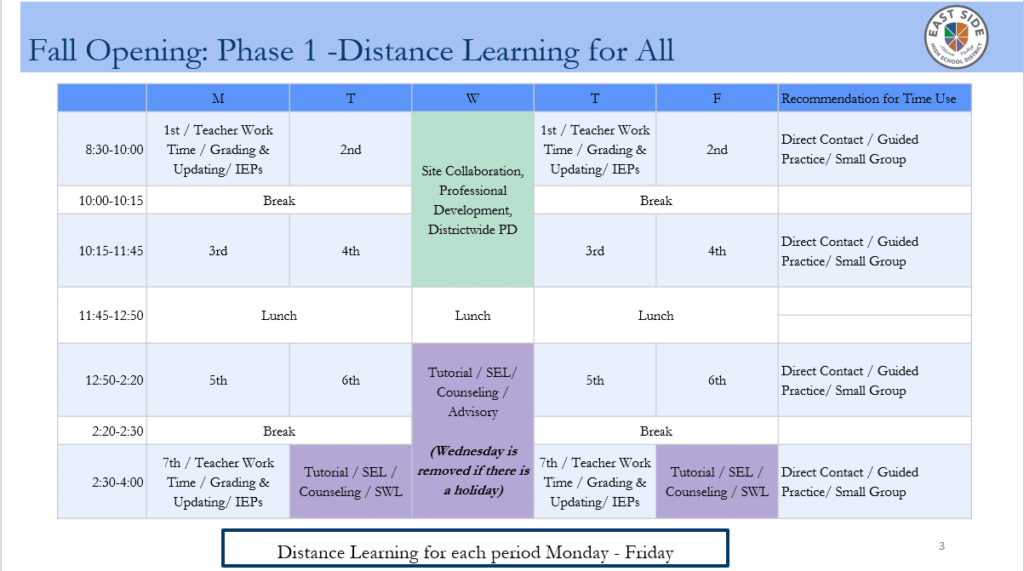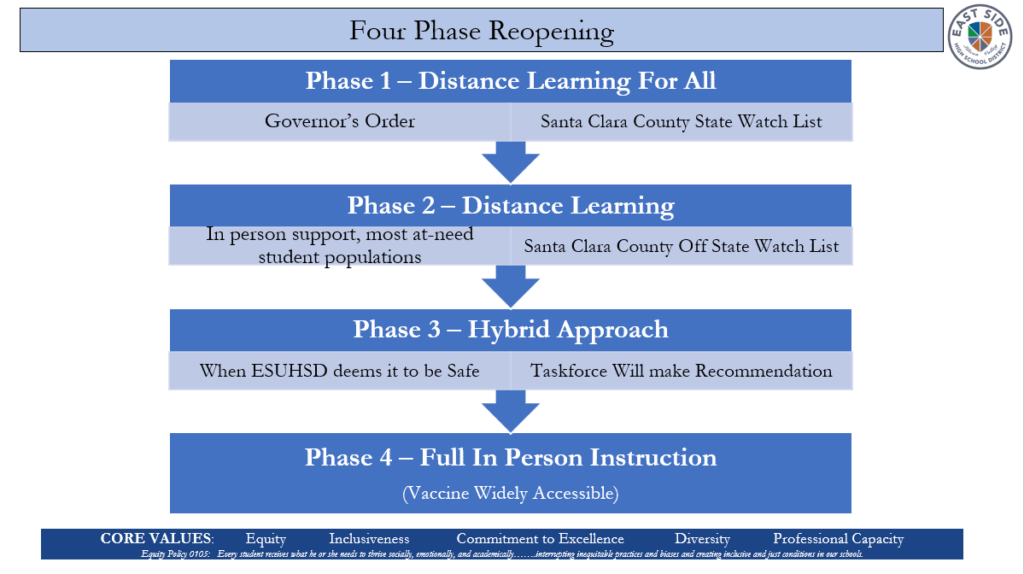For thirty years, the night before school opens is a restless night of sleep because of the anticipation of going back to school. This year was no exception. However, what was different about visiting schools on the first day, Aug. 11, was that instead of experiencing excitement and nervous energy that emanates from school campuses, it was eerily quiet because of distance learning.
There were a few teachers preparing to teach from their rooms and support staff were ready to help students with their schedule or technology issues. Each of the two schools I visited had only one person picking up a laptop or hotspot. This was a clear indication of the preparations made by staff throughout the district to open schools in distance learning.
Taking the complex structures of the school day and transforming it to an online experience simply cannot be duplicated nor can it happen overnight. There were unintended consequences to our decision to have a grade floor last spring. We did not want any student’s grade to be harmed because of distance learning. Students could only improve their grade. This allowed for some students to take their grade and run and disengage with school. We saw a significant drop in engagement from late March to May.
Teaching essentially stopped because moving forward with new material would essentially set more students back creating a deeper achievement gap. This made teaching even harder than it already is for teachers
Our teachers realized that beginning the new semester in distance learning required everyone to step up their game. There needed to be more accountability for both the teacher and the student. This accountability started with teacher preparation.

In July alone, more than 106 professional development sessions were offered to our employees from the various online video platforms to social emotional learning and relationship building to using assessments online. We had more than 1,600 participants. We also partnered with the Krause Center for Innovation, which provided training on various aspects of distance learning to another 100 East Side teachers.
Another lesson learned from last spring was that our students needed ongoing support from their teachers and access to our counselors and social workers. We created a schedule that is much more aligned to the supports provided for in-person instruction.

The entire district has moved to a block schedule where students will meet with each teacher two days per week for 90 minutes and will have opportunities to participate in small group instruction, tutoring, work with counselors on college applications, financial aid or to meet with social workers and receive mental health support. Teachers are required to stay online for the entire 90 minutes, even if not all students need the 90-minute support.
We have also repurposed non-classroom staff to work with students who have not shown up or disengaged with distance learning. We are also opening our schools to students who do not have broadband at home or a safe or quiet place to complete their distance learning. We’re providing a grab and go lunch for our students and dinner to anyone in the community 18 years or younger.
We know that nothing replaces in-person learning, but we’re doing our best to create the best possible distance learning experience. We are facing a four-phased approach to fully reopening our schools. Each phase will focus on maintaining the health and safety of our staff, students and families.
Phase one, based on the governor’s mandate, is full distance learning for everyone. Phase two is bringing back our most vulnerable populations for in-person learning, as well as some specialty classes, when Santa Clara County is taken off the state COVID-19 watch list. Phase three will be a hybrid approach: a combination of distance learning with in-person learning. Phase three will require stakeholder input; the creation of a taskforce to identify the conditions for implementation and design of the hybrid learning program together. Phase four is full, in-person instruction.
Unfortunately, phase four may not occur until there is a vaccine that is widely accessible.

We are also facing a fight for social justice that our nation has not seen since the 1960s. We are at an inflection point in our nation’s history where the time to tear down the walls of oppression in our public-school system is now. We have laid the groundwork in East Side to take on this enormous challenge. We committed ourselves, as a district, to building capacity amongst all staff members to ensure that equity and inclusion are essential principles of our school system.
Specifically, we set a goal to build capacity to attain equitable ESUHSD communities where:
- ALL students are welcomed as they are
- Strengths and areas of growth for all students are known and supported
- Adults positively respond to the social-emotional, wellness and academic needs of every student
- All learners engage with tasks that develop the strategic thinking skills for FULL participation in their local communities and the global society
We cannot allow this pandemic to destroy the advances we have made to the East Side Union High School District. It is more important than ever that we meet the demands of distance learning and provide the scaffolding and safety nets so that all of our students meet the rigorous demands of earning a high school diploma. We will not let our community down.
San José Spotlight columnist Chris Funk is the superintendent of the East Side Union High School District. His columns appear every third Monday of the month. Contact Chris at [email protected] or follow @chrisfunksupt on Twitter.



Leave a Reply
You must be logged in to post a comment.